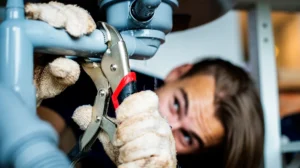Understanding the Culprit
Slab leaks can be a nightmare for homeowners, causing water damage, structural issues, and even health hazards if left unchecked. Understanding what causes slab leaks is crucial for effective prevention and timely detection. These leaks occur when pipes beneath the concrete slab foundation of a home develop cracks or holes, leading to water seepage. Factors such as soil movement, corrosion, and poor installation contribute to the development of slab leaks.
Detecting Slab Leaks: Signs to Watch Out For
Detecting slab leaks early is essential to minimize damage and repair costs. Keep an eye out for signs such as unexplained increases in water bills, damp or warm spots on the floor, the sound of running water when no taps are open, and cracks in the walls or flooring. If you notice any of these indicators, it’s crucial to take immediate action.
Prevention: Guarding Against Future Leaks
Prevention is key when it comes to slab leaks. Regular inspection of plumbing systems and the foundation of your home can help identify potential issues before they escalate. Additionally, investing in high-quality piping materials and professional installation can reduce the risk of leaks occurring in the first place.
Steps to Fixing Slab Leaks
- Identify the Leak: The first step in fixing a slab leak is pinpointing its location. This often requires the expertise of a professional plumber equipped with specialized detection tools such as electronic leak detection equipment and infrared cameras.
- Access the Leak: Once the leak is located, the affected area of the slab must be accessed. This may involve cutting through the concrete foundation, which requires precision to minimize damage.
- Repair the Leak: Depending on the severity and location of the leak, repair options may vary. Common methods include epoxy pipe coating, pipe rerouting, and repiping. Your plumber will recommend the most suitable solution based on the specific circumstances of the leak.
- Restore the Slab: After the leak is repaired, the concrete slab must be restored. This involves filling the access hole with new concrete and ensuring a smooth surface.
Conclusion: Protecting Your Home
Slab leaks pose a significant threat to the integrity of your home and can lead to costly repairs if left unaddressed. By understanding the causes of slab leaks, being vigilant for signs of trouble, and taking proactive measures to prevent leaks, homeowners can protect their property and ensure peace of mind. In the event of a slab leak, prompt detection and professional repair are essential to minimize damage and restore the integrity of your home’s foundation.








